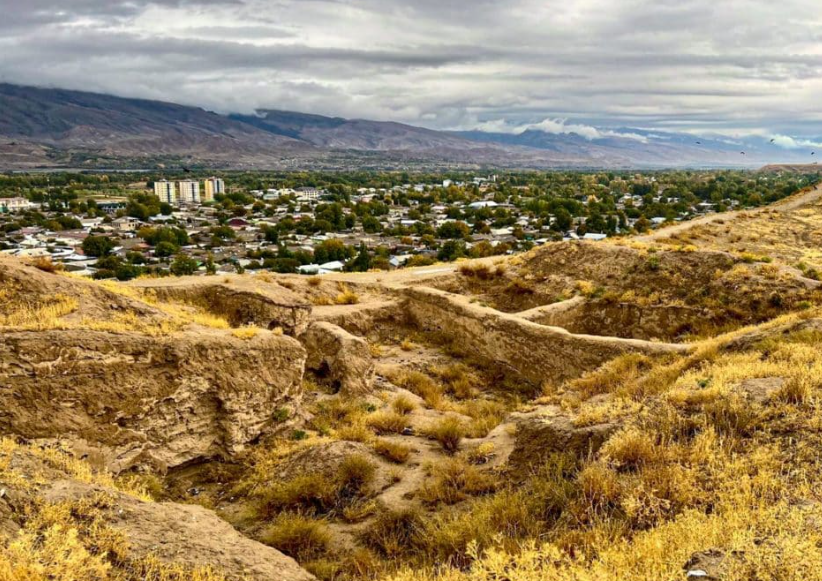The ancient city of Penjikent, located in the Sughd province of Tajikistan, is a remarkable archaeological site that offers a glimpse into the rich history and culture of the Sogdian civilization. Dating back to the 5th century, this city was once a thriving center of trade and culture along the Silk Road. The site was discovered in 1946 and has since been the subject of extensive archaeological excavations.

The city's layout is well-preserved, with clear evidence of its urban planning. It consists of a citadel, a fortified castle that housed the palace of the last ruler, Divashtich, and a city area with numerous residential buildings, temples, and marketplaces. The citadel, located on a hill, was surrounded by three walls and featured a palace and watchtowers. The city area, situated on a plateau east of the citadel, was enclosed by high walls and included two large temples with extensive courtyards.
One of the most striking features of Penjikent is its vibrant wall paintings and wooden carvings, which have been remarkably preserved despite their age. These artworks provide valuable insights into the religious beliefs, daily life, and artistic achievements of the Sogdians. Many of these frescoes depict scenes from religious rituals, mythological stories, and everyday activities, showcasing the Sogdians' advanced artistic skills and cultural sophistication.
The city's residential areas were densely packed with multi-story buildings, some of which had complex architectural designs and were adorned with intricate decorations. The streets were narrow and often covered, with rooms that had small openings for light and ventilation. These details highlight the advanced urban planning and architectural expertise of the Sogdians.
In addition to the main city site, there are other points of interest in the Penjikent area. The Sarazm Archaeological Site, recognized as a UNESCO World Heritage site, is located nearby and provides evidence of one of the oldest settlements in Central Asia, dating back over 5,000 years. This site is known for its advanced metallurgy and evidence of early trade networks. The Tower of Silence, a Zoroastrian funerary site, is another notable landmark that reflects the religious practices of the region.
Overall, the ancient city of Penjikent stands as a testament to the vibrant and sophisticated Sogdian civilization. Its well-preserved ruins and stunning artworks offer a unique opportunity to explore the rich history and cultural heritage of this important Silk Road city.




































